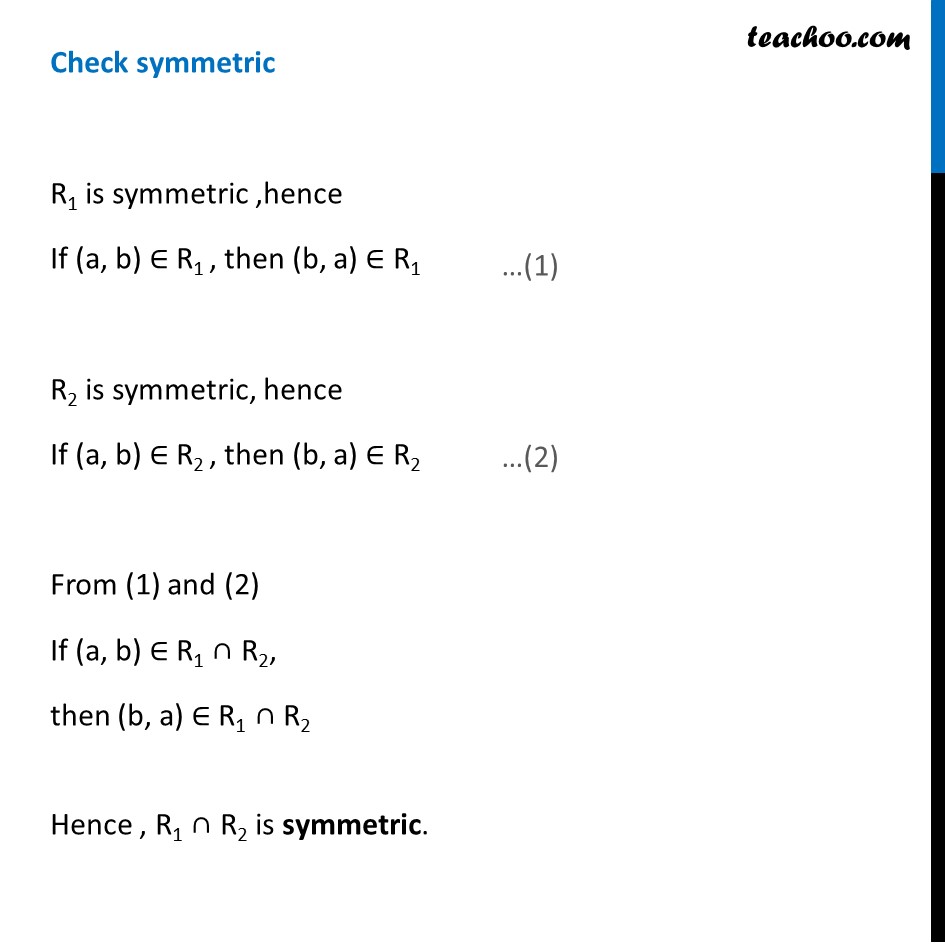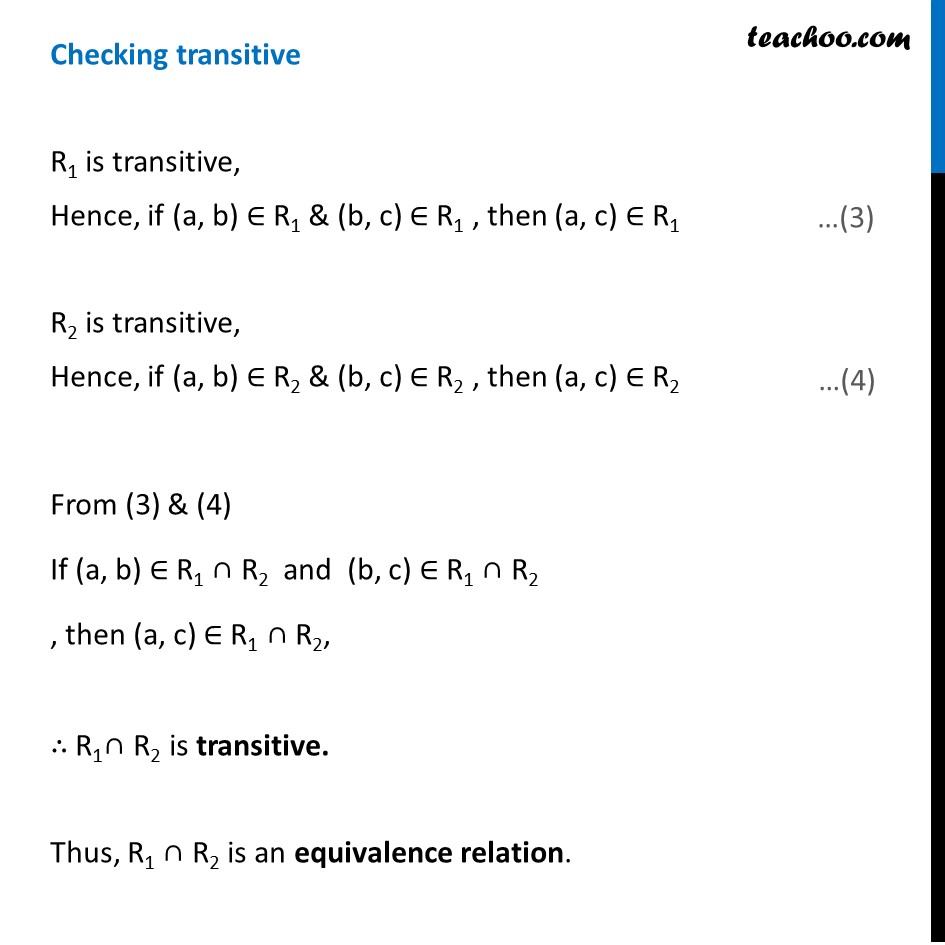



To prove relation reflexive, transitive, symmetric and equivalent
To prove relation reflexive, transitive, symmetric and equivalent
Last updated at Dec. 16, 2024 by Teachoo




Transcript
Example 18 If R1 and R2 are equivalence relations in a set A, show that R1 ∩ R2 is also an equivalence relation. R1 is an equivalence relation 1. R1 is symmetric (a, a) ∈ R1, for all a ∈ A. 2. R1 is reflexive If (a, b) ∈ R1 , then (b, a) ∈ R1 3. R1 is transitive If (a, b) ∈ R1 & (b, c) ∈ R1 , then (a, c) ∈ R1 R2 is an equivalence relation 1. R2 is symmetric (a, a) ∈ R2, for all a ∈ A. 2. R2 is reflexive If (a, b) ∈ R2 , then (b, a) ∈ R2 3. R2 is transitive If (a, b) ∈ R2 & (b, c) ∈ R2 , then (a, c) ∈ R2 We have to prove R1 ∩ R2 is equivalence relation Check reflexive For all a ∈ A (a, a) ∈ R1, & (a, a) ∈ R2 Hence, (a, a) ∈ both R1 & R2 Hence, (a, a) ∈ R1 ∩ R2 ∴ R1 ∩ R2 is reflexive. Check symmetric R1 is symmetric ,hence If (a, b) ∈ R1 , then (b, a) ∈ R1 R2 is symmetric, hence If (a, b) ∈ R2 , then (b, a) ∈ R2 From (1) and (2) If (a, b) ∈ R1 ∩ R2, then (b, a) ∈ R1 ∩ R2 Hence , R1 ∩ R2 is symmetric. Checking transitive R1 is transitive, Hence, if (a, b) ∈ R1 & (b, c) ∈ R1 , then (a, c) ∈ R1 R2 is transitive, Hence, if (a, b) ∈ R2 & (b, c) ∈ R2 , then (a, c) ∈ R2 From (3) & (4) If (a, b) ∈ R1 ∩ R2 and (b, c) ∈ R1 ∩ R2 , then (a, c) ∈ R1 ∩ R2, ∴ R1∩ R2 is transitive. Thus, R1 ∩ R2 is an equivalence relation.